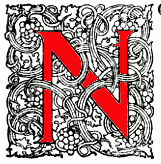[The following passage comes from an article in the September 1878 issue of the The Graphic. — George P. Landow]

ext year the people of Dublin will have to celebrate the hundredth anniversary of the birth of Moore, the natal day of Ireland's poet having been MayaS, 1779. The house in which he was born, No. 12, Aungier Street, Dublin, is still standing, and the shop in connection with it is still used for the provision business, over which John Moore, the poet’s father, presided. The people of Dublin have not followed the example of their London neighbours in affixing medallions on the buildings where celebrities were born, but the birthplace of Moore is singularly marked, some admirer having placed his bust in a niche half-way up the façade.
From his childhood Moore seems to have given promise of his future fame, for Herbert, the portrait-painter, speaks of him at five years old as being a precocious and entertaining little fellow, who had even then put away his toys, and whose repeated request was to have parts of Shakespeare recited to him. He entered college at sixteen, and, having joined the Historical Society, became one of its turbulent, as well as most eloquent members. His versatile mind, intelligent countenance, his patriotism, and last and most marked of all, his talent as a musician and composer, won him on leaving the University friends in every step of the social scale. He was then, to quote Leigh Hunt, as delightful a person as one could imagine. “His sort" of talent has this advantage in it, that being of a description intelligible to all, the possessor is equally sure of present and future fame.” His Irish melodies introduced a revolutionary and refining phase into the history of music and the lyrical literature of the kingdom. Luttrell, indeed, recorded what was almost analogous to a fact when he wrote
I’m told, dear Moore, your lays are sung,
Can it be true, you lucky man?
By moonlight in the Persian Tongue
Along the streets of Ispahan.
An exceedingly unprepossessing statue of Moore was inaugurated during Lord Carlisle's Viceroyalty in College Street, facing the Bank of Ireland. This is still permitted to be an eyesore in the city. A relative of the poet, I believe, or at all events a sculptor of the same name, executed the work, but a comparison with any of the written descriptions, or with such paintings as that of Sir Thomas Lawrence, in the Royal Irish Academy, of Moore will reveal how woefully unlike the original the statue is. As you look at the Lawrence portrait every word of Willis's description of his friend occurs to the mind. “His mouth is the most characteristic feature of all. The lips are delicately cut, slight and changeable as an aspen: but there is a set-up look about the lower lip— a determination of the muscle to a particular expression, and you fancy that you can almost see wit astride upon it. It is written legibly, with the imprint of habitual success. It is arch, confident, and half diffident, as if he was disguising his pleasure at applause, while another bright gleam of fancy was breaking on him. The slightly tossed nose confirms the fun of the expression, and altogether it is a face that sparkles, beams, radiates.” Moore’s remains were interred at Devizes in Wiltshire, near that “Sloperton Cottage” from whence many of his brightest poems were dated, and where the poet and his wife Bessie lived together happily for so many years.
Related material
- Thomas Moore (sitemap/homepage)
- “Thomas Moore: The poet of all circles, the delight of his own” (The Illustrated London New, 1843)
- Portrait bust on a building in Belfast
Bibliography
“Dublin Illustrated.” The Graphic (17 August 1878): 169-81. Internet Archive online version of a copy in the University of Illinois Library. Web. 14 August 2018.
Last modified 14 August 2018